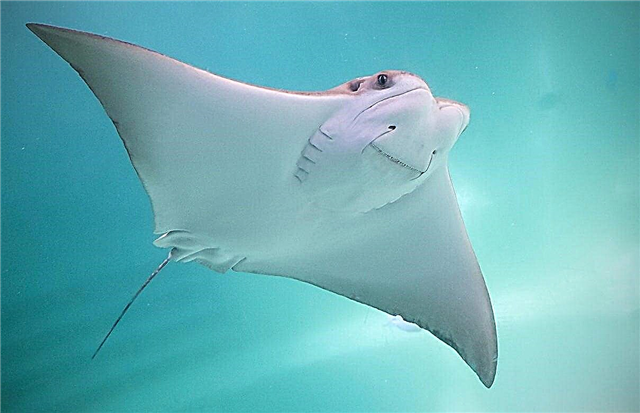
For many people, fish is not only a favorite food, but also a welcome prey. Fishing enthusiasts are happy to recall the quiet morning bites, and the adrenaline rush, when the float twitches a little, it suddenly goes under the water, trying to tear the fishing rod out of his hands.
Fishing is not only a test, but also an expectation of triumph. Every real fisherman wants to demonstrate his boldness by catching fish of incredible size. And some do it, because among the freshwater fish in Russia there are just incredible in size and weight of the individual.
Bream

This species can be found in almost any freshwater reservoir in Russia. Also found in northern and central Europe. The largest bream in history was caught on the territory of modern Finland, in Lake Visijärvi, in 1912 and weighed 11.6 kg. In Russia, abnormally large individuals were recorded in 1951 on the Vyatka River and in 2003 on Lake Ladoga. The mass of the caught bream amounted to almost 6 kg.
Average weight - 3-4 kilograms, length up to 40 cm. It is considered a valuable commercial fish. In the 30s of the 20th century, the catch of this species in our country reached 120 thousand tons per year.
Burbot

The largest representative of the species was caught in Siberia in 1967. Its weight was 30 kg and its length was 120 cm. Other cases have also been reported. 1985, Lake Onega, a burb weighing 16 kg was mined. 1910, Lake Ladoga, a fish weighing 10 kg was caught. The capture of such large burbots is an incredible success, because they average weight 3-4 kg.
Burbot - northern fish. He likes cold water, so rarely appears in the south. It lives in Siberian rivers and in Lake Baikal. Also found in northern Europe: in Finland, the Baltic states, the Leningrad region.
Zander

Sudak is a predator, eats small fish, leads a secretive lifestyle. In places of active hunting, especially during the feeding process, it is not difficult to catch it. Because of its voracity, even a novice fisherman can catch it. Zander is prized for a healthy dietary protein-rich meat.
This type of fish can be found not only in fresh lakes and rivers of Russia, but also in the seas: Black, Baltic, Azov, Caspian. Usually the mass of caught zander is 8-10 kg. However, a documented case of catching fish weighing 22 kg. It is also said that the largest zander was caught in the last century on the Volga River, its weight was 40 kg.
Lake salmon

Lake salmon is not even a species or subspecies, but the morph of Atlantic salmon. A morph is a type of animal that has persistent differences within a species or population; this category includes melanists, albinos, local varieties, and so on. The main difference between lake salmon and Atlantic salmon is feeding in lakes, and not in salt ponds. The juveniles of such fish do not go to sea in the process of growing up, they live in the lake, and then spawn in the rivers that flow into it. In Russia, such salmon lives in Ladoga and Onega lakes, Segozero and a number of other northern water bodies. You can fish only within the Onega Lake, other populations are listed in the Red Book.
Lake salmon is inferior in size to sea salmon; average weight is indicated in the range of 3-4 kg. The maximum indicator, officially recorded, is 7 kg, but the fishermen say otherwise, saying that they caught fish weighing up to 10 kg or more. However, such a statement should be treated with caution, because the Baltic salmon, for example, also goes to spawn through Ladoga, Neva - the rivers that flow into Lake Ladoga. And when switching to a freshwater regime, the fish changes color, it is easy to confuse the representatives of the ocean herd with the “indigenous” freshwater inhabitants of larger sizes. Such individuals can also get into Lake Onega, and a person may encounter migratory fish, considering it a local freshwater fish.
Carp

Appreciated for its delicious, fatty meat. Carp eats up by absorbing algae. He simply swims with his mouth open and eats everything that comes in his way.If it weren’t for natural enemies: catfish, then a carp, living an average of 10-15 years, could grow to incredible sizes. The largest carp was caught in 1937, in Belgium. The monster, 3.5 m long and weighing 190 kg, terrorized Lake Ostend for several years. In Russia, a record carp was caught on the Voronezh River; it weighed 68 kg. Officially - carp weight reaches 14 kg. Common carp is common carp.
Pike

The predator pike is familiar to everyone since childhood. It is widespread throughout Russia, therefore it is often found as a character of folklore. Anglers also know a lot of incredible stories about pike. It is believed that the largest pike was caught in the 15th century, in 1497. Her weight was 140 kg, and her body length was about 6 meters. It was possible to determine the age of the fish, since it was ringed. It was established that the mark corresponded to the era of the reign of Frederick II, the ruler of the Roman Empire. The pike was ringed around 1230 and released. It turns out that she lived for 270 years, before again caught by a man. Officially it is believed that the weight of pike reaches 16 kg.
White amur

The fish was discovered in the Amur River, which was reflected in its name. Herbivorous grass carp was unpretentious and perfectly succumbed to breeding in fish farms. Later it was distributed throughout Russia, brought to Kazakhstan, Belarus, and Ukraine. Now fish are actively caught in China. Cupid is also bred in the United States.
The average weight of the fish is 30 kg and the length is 120 cm. This is official data, while fishermen say that they usually manage to catch grass carp with a maximum weight of 25 kg. The case was documented when, on the Volga River, with the help of a net, specimens of grass carp were obtained, the weight of which exceeded 45 kg.
Taimen

The original Siberian fish belongs to the species of salmon. Foreign fishermen call taimen - "Russian salmon". For many years, fishing was carried out barbarously and significantly reduced the number of species. Today, taimen is listed in the Red Book of Russia, its catch is limited. It is believed that the weight of ordinary taimen lies in the range from 50 to 70 kg. But the size of an individual depends on the habitat. Statistics on taimen living in the Yenisei River say that the average weight of the fish is 78 kg. In 1943, the largest representative of the species was obtained on the Kotui River. Its mass is 105 kilograms and its length is 2 meters.
Catfish

The most legendary fish, covered in many myths. Soma are predators. The diet of their food is not only small fish. Large old catfish can prey on ducks sitting on the water, on animals that came to the watering place, on small pets. Soma live and grow for a very long time. It is said that in the 19th century, in Russia, a catfish weighing 400 kg was caught. Officially caught catfish weighing 306 kg, a length of more than 3 meters and an age of about 80 years is officially registered. Modern catfish weighing more than 100 kg are extremely rare.
Kaluga

Kaluga fish is a close relative of the beluga (freshwater fish of the genus Beluga, the family of sturgeon), spends all its life in fresh water. It can be found in the Amur River basin, in the temperate climatic zone. On average, the fish reaches a length of 2.5-3 m and a weight of 150 kg. The largest documented individual had a weight of 382 kg and a length of 5.5 meters.
It is believed that fish can grow up to 8 m and gain weight up to 1.5 tons. Kaluga is a predator, feeds mainly on bottom fish. Large kaluga devours chum salmon, pink salmon and even preys on smaller individuals of its kind. Due to uncontrolled catch, it was on the verge of extinction; therefore, in the middle of the 20th century it was taken under state protection. Now kaluga is successfully recovering.
The largest river fish in Russia

Beluga is the largest river fish in Russia. Lives both in sea and in fresh water. Due to its huge size, it is called the "king of fish." Beluga is constantly growing throughout his life. The largest individuals reached a length of 8 meters and weighed about two tons. In 1827, the capture of a beluga weighing 1.5 tones was documented. Almost a hundred years later, in 1922, 1224 kg of fish was caught at the mouth of the Volga.The national museum of the Republic of Tatarstan stores a beluga skin 4 meters long, the weight of the fish during the capture was more than a ton.












